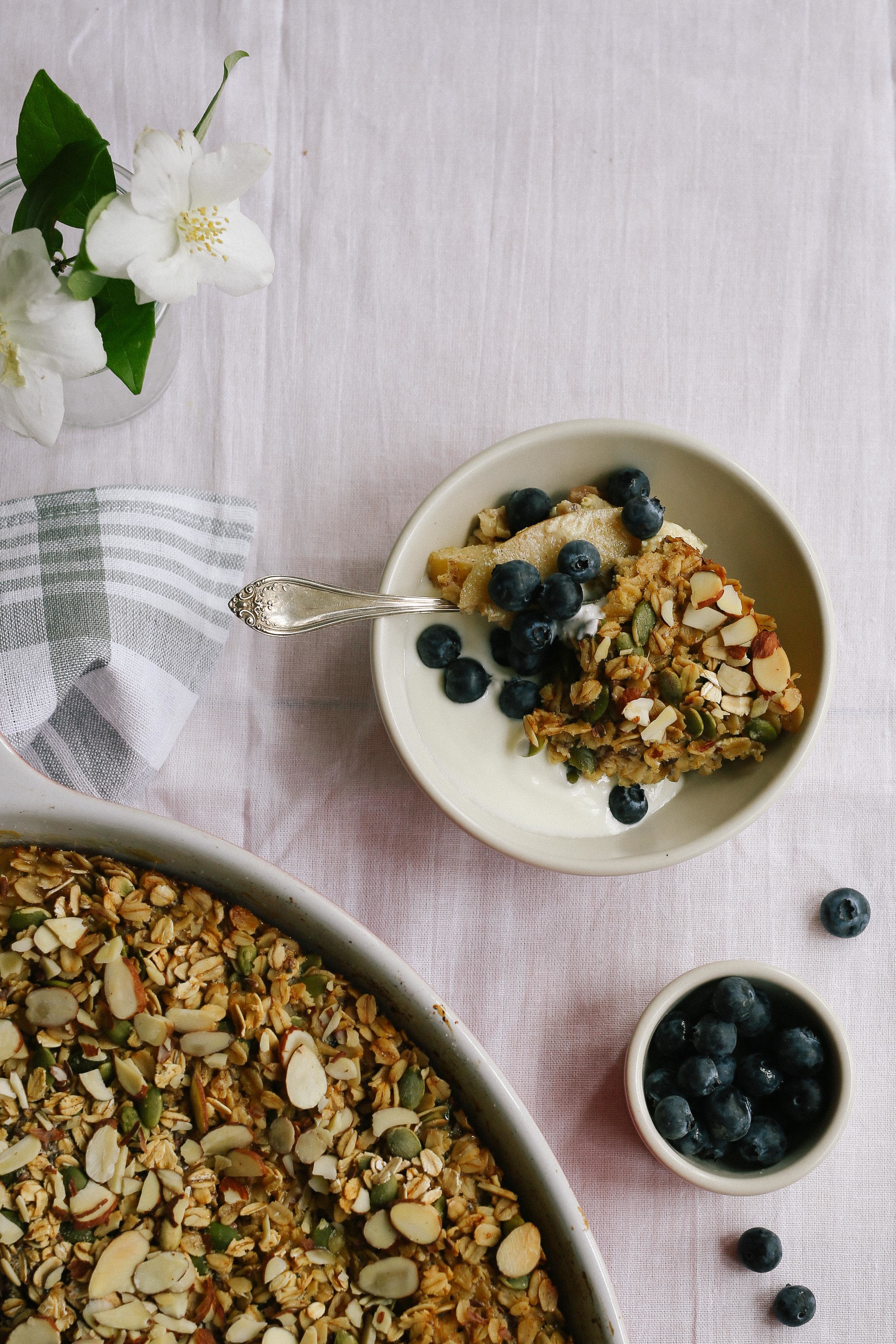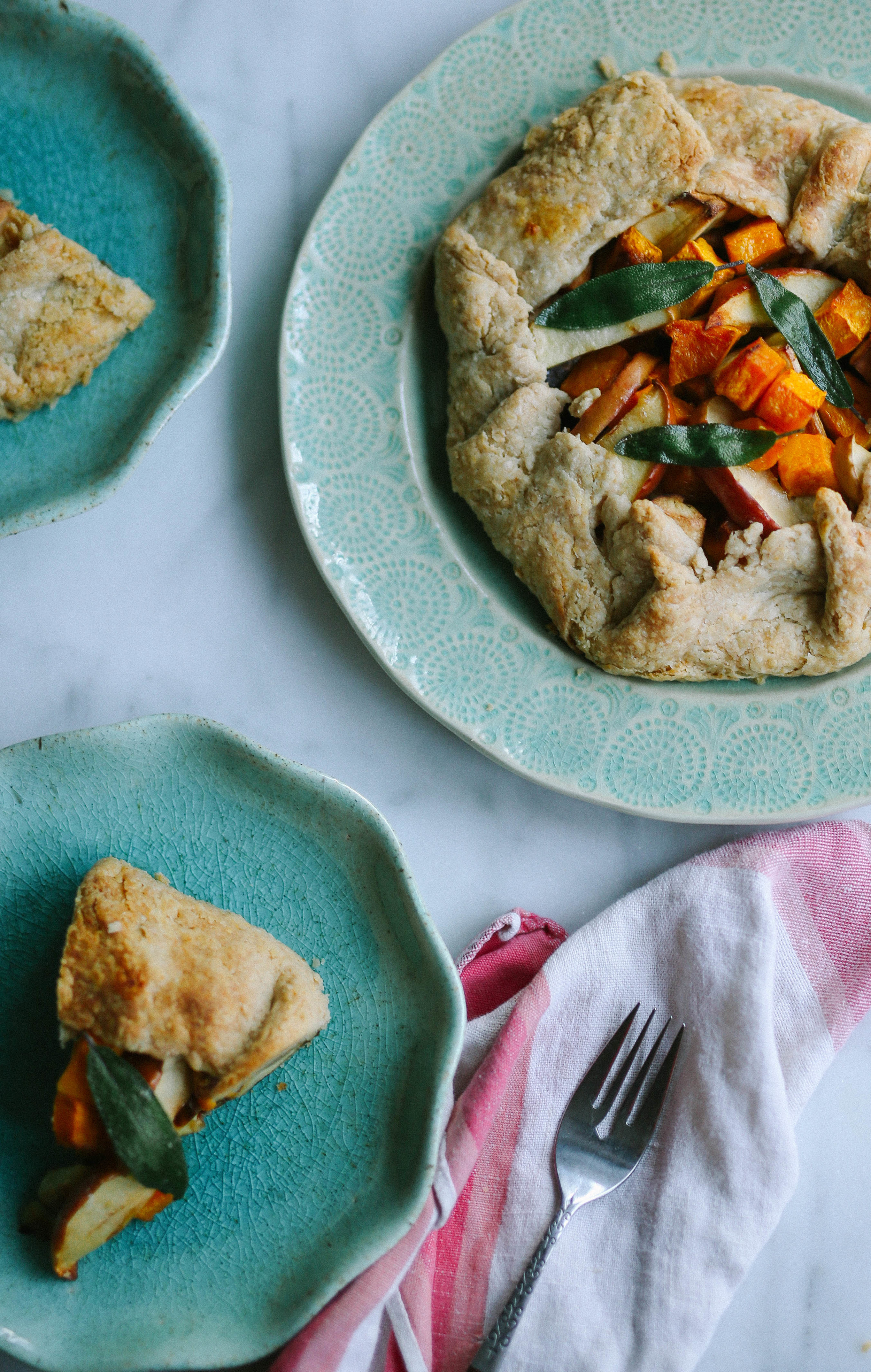Being a grownup is hard. You have to deal with unforeseen and sometimes high-stress life situations, you have to keep a level head when really you feel like exploding all over the place, and you are solely responsible for managing your cake intake. I feel like we're doing okay with the first two things this week, given that we've been experiencing some wily circumstances (long story for a future post), but to say I managed my cake intake would be a gross overstatement.
This is a good cake to keep around in these kinds of times, primarily because it is delicious, but also because it is mostly apples! So eating a bunch is NBD. Which is good, because I'm actually eating another piece as I write this post. #grownupdecisions
(Update: this cake is now gone! We ate it all. Sorry/not sorry, local friends.)
I feel that I must point out that the original recipe for this cake (from Dorie Greenspan) contained rum instead of the cardamom and orange blossom water. Rum and I haven't been friends since an unfortunate incident in college involving a very boozy drink served in a hollowed-out pineapple, hence the change in flavor additions. But if you would like to go Dorie's route, nix the cardamom and orange-blossom water and add in 3 tablespoons of rum. I think I'm going to make this with 3 tablespoons of Applejack (brandy and I are still friends) and a pinch of cinnamon and nutmeg next time, so I'll let you know how that goes when I give it a try.
I would like to say, though, that the cardamom and the orange blossom water made the whole thing smell REALLY good while it was baking. Really, stupid good. Plus, even without the booze, the cake was still incredibly moist and never dried out, even though we left it unwrapped as per the original recipe's instructions. That is impressive for any cake in our bone-dry state.
One more note: there really are a lot of apples in this cake! It won't feel like there's enough batter to hold them all, but there is, trust me. You can move the apples around a bit in the pan to spread out the mixture evenly, but believe that the batter will help to fill in the cracks and empty parts.
makes one 9-inch cake - serves 8 (or maybe just 2)
(adapted from Dorie Greenspan's recipe in Genius Recipes)
I didn't peel my apples when I made this cake, and I'm very happy I made that decision. Because I used some Pink Lady Apples, the bright pink peel caused the apple flesh to blush in the oven, and gave this cake really lovely pops of pink. Plus, I feel that there is enough flavor in the peel that I'm more than willing to risk the slight hesitation in texture it gives to each bite. You may peel your apples if you disagree.
3/4 cup all-purpose flour
3/4 teaspoon baking powder
pinch of salt
1 teaspoon cardamom (freshly ground, if possible)
4 large apples (use different kinds, if you can! I used two Pink Lady, one Fuji, and one Opal)
2 large eggs
3/4 cup sugar
2 teaspoons orange blossom water
1/2 teaspoon pure vanilla extract
1/2 cup unsalted butter, melted and cooled
Place a rack in the center of your oven and preheat the oven to 350˚F. Generously butter and flour an 8 or 9-inch springform pan, and place it on a baking sheet.
Whisk the flour, baking powder, salt, and cardamom together in a small bowl. Cut the core from the apples and cut the apples into 1-inch chunks.
Break the eggs into a large bowl and whisk until foamy. Add the sugar and whisk to blend well. Whisk in the orange blossom water and vanilla extract. Add half the flour mixture to the bowl and whisk until just combined. Add half of the butter mixture and whisk until just combined. Repeat with the remaining flour and butter, mixing gently after each addition. You will have a smooth, thick batter.
Using a rubber spatula, fold in the apples, turning the fruit so that it is coated with batter. Scrape the mixture into the prepared springform pan, and move it around a bit so that there aren't any large holes or gaps, and so the mixture evenly reaches the inner walls of the pan.
Slide the baking sheet with the pan into the oven, and bake for 45-60 minutes (begin checking the cake at 45 minutes), until the top of the cake is golden brown and the center of the cake springs back when touched. Transfer to a cooling rack and let rest in the pan for 5 minutes.
Carefully run an icing spatula or a thin knife between the cake and the pan, and remove the sides of the springform pan, making sure there aren't any apples stuck inside the pan. If you want to remove the bottom of the springform pan from the cake, wait until the cake is almost completely cooled and run a long spatula between the pan's bottom and the cake. Cover the top of the cake with a piece of waxed paper or a clean, lint-free dishtowel, and invert onto a rack. Carefully remove the bottom of the pan and re-invert the cake onto your serving plate.
We ate this warm, at room temperature, and after it had sat around for a bit. It is great each and every way! Dorie recommends NOT wrapping this cake, as it is so moist that it will cause the nice, crusty edges of the cake to become a bit soggy. After testing this cake in one of the driest states in the Union, we concur. Simply place a piece of waxed paper against to cut parts of the cake to keep them from drying, or just cut off any dry-ish parts before serving and eat them yourself. :)



















